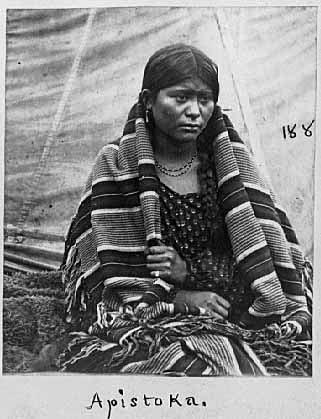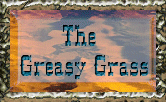Dakota Commemorative March 2014
|
I
had walked in the path of these ancestors, my feet had retraced
the path of their suffering, and in that moment I felt their grief
and the grief of all the subsequent generations.
|
 |
||
|
Apistoka
A young Dakota woman who held the pain of a Nation in her eyes. |
|
Second Page of Reports of Experiences of the 2002 Commemorative March Some of the comments offered by Mary Beth Faimon: We were blessed with miracles. The Spirits were watching over us. In New Ulm we were joined by a small group of women from the Sioux Valley Reserve and Bird Tail Reserve in Canada, who had flown in that day from Winnipeg and driven down from St. Paul. They didn't know where we were, and when they stopped at a gas station in New Ulm our sanitation unit driver was there and told them where to find us. New Ulm was a town of unspeakable horrors, where Dakota men shackled in wagons on the way to Mankato were murdered by local citizenry. Another group of Dakota from the Wahpeton Reserve in Saskatchewan had their car radiator overheat, and a New Ulm citizen who was walking with us towed the car to his garage and had the radiator replaced. When the walkers approached the Henderson cutoff from hwy 169 to Hwy 93 on Sunday afternoon they were wondering how they would get across the highway, the traffic was heavy in both directions. Three highway patrol cars appeared and blocked the traffic. One of the highway patrol officers told the others that he would lead the walkers into Henderson. He also intervened with the patrol traffic engineer who was against the walkers using hwy 93 to enter Henderson and told him that the walkers had to go to Henderson; it was a part of their history. He had read about the Henderson area, and the significance of the town to the Dakota Oyate (people), how a baby was murdered, and others died. Along the walk into Henderson the trees along the river were filled with eagles, watching. This was thought to be the spirits of the ancestors, and that people had been buried there who had died along the walk. We were housed and fed in Henderson the following night and morning in place of Jordan. Several Henderson residents had ancestors who were in the Henderson area in 1862. They told stories of how their families had been warned by the Dakota, and their families left the area during that time. They were grateful for the warnings. When we left Henderson on Tuesday morning we were accompanied by the students from the Henderson charter school for 8 miles, along the Henderson Station Road across the railroad tracks, on a gravel road. I was driving ahead to see how far it still was to the intersection of hwy 1, and one of the walkers was taking a break and riding along with me. As we approached the asphalt road that is marked as co. rd. 51, a young, frisky, red dog greeted us. Now, I talk to animals, and I rolled down my window and greeted the dog and asked, "Are you coming with us?" not knowing what I really was asking. The dog joined the walkers, running in and out of the crowd, running ahead, and keeping all the other dogs away. When our headman carrying the eagle staff noticed a pit bull in a yard ahead, he became concerned, and the red dog distracted the pit bull while we walked past his territory. The dog accompanied us across hwy 169, and we were able to cross the highway as a group, not only the walkers, but the caravan of cars as well. There was no traffic either way. Then we all became concerned about the dog and his safety, but he was seen back in his yard when we drove back to Henderson to spend the night. Just before hwy169 there was a horse ranch, and the horses lined up along the fencing and greeted the walkers. One of them, a beautiful black horse with a clipped mane began to prance, tail high in the air. The horse Oyate greeted the people. This was our walk to Jordan. Mary Beth Faimon Copyright of this report belongs to Mary Beth Faimon
There
are more stories that can be told. The laughter, conversations
and stories among the walkers were bonding. When the lathe memorial
stakes were placed at mile markers with the names of the relatives
of the known walkers in 1862 the emotions and the tears were
filled with grief. Three stakes broke while being pounded into
the ground, and the stakes belonged to descendants who were
on the walk. It was interpreted to symbolize the mending that
needed to take place in those families, and the stakes were
retied with red strips of cloth. When the walkers entered Fort
Snelling State Park on Wednesday, bright blue lights surrounded
them. To the Dakota who walk the traditional spiritual path,
and who see these things, the Spirits were surrounding and supporting
them. - Waziyatawin
|





